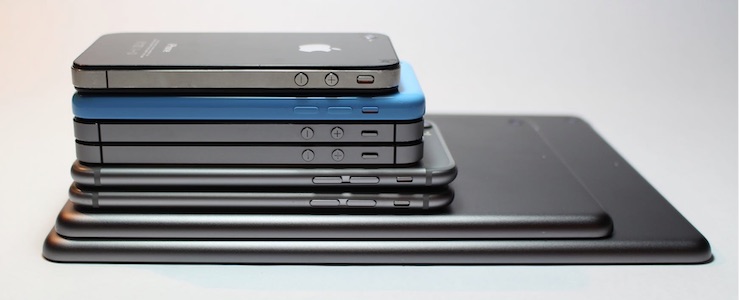
Key metrics for improving mobile ecommerce conversions differ from desktop. Tracking conversions by device model, for example, is vital for mobile — not so much for desktop.
It’s easy to become overwhelmed by the sheer volume of web analytics data for ecommerce. In my experience, there are a few “cuts” of data that matter more for mobile than for desktop. Conversely, there are a handful of traditional metrics from desktops that are not as important on mobile or potentially difficult to optimize.
In this post, I’ll share my core metrics for improving mobile ecommerce performance.
Matters More on Mobile
Device model. Many tools, especially Google Analytics, do an amazing job of accurately capturing different facets of data around the mobile hardware and software used during a site visit. These variables typically include device brand, operating system, model, browser, and service provider. In my experience, the most important cut for mobile is conversion by device model.
Merchants are often shocked to see a list of 100 or more mobile device models and wonder how such a large report could be helpful. However, viewing conversion by device model almost always identifies key issues on a specific device. Look at the top 10 devices and see if they have roughly the same conversion rates. If not, you’ll know which device(s) to test your site on to find potential conversion-funnel problems.
Abandon cart rate. Abandon cart rates are more important on mobile devices because there is a lower probability that users will return to the site to convert. So diagnosing whether you’re improving your abandon cart rate over time is essential. Shoppers will add items to their mobile cart, but knowing why they don’t move on to the payment stage is critical to understanding low conversion rates.
Page count. This metric is generally ignored in a desktop analysis. But it is a much better indicator of the health of your mobile website than bounce rate. Mobile visitors want to flip through many options quickly, and if they’re not doing that closer to the rate of desktop pages, you should figure out why. I have a guess, which leads to the next metric.
Page speed. Ecommerce managers generally look at overall site speed — for desktop and mobile. However, page speed typically varies greatly for desktop and mobile sites. Page speed is more critical on mobile because of spotty connections, on-the-go users, and a general perception that slow sites are not trustworthy. Look at page speed by mobile browser to ensure each of the leading mobile browsers renders your site quickly. Google tests your site speed using an older version of Chrome. So make sure you capture the speed for mobile Safari and Firefox browsers.
Matters Less on Mobile
User retention. Measuring whether a user revisits your site on the same device is misleading, at best. With users hopping from device to device, retention can often be skewed negatively for mobile users. Thus ignore user retention on mobile devices until other metrics are optimized.
Bounce rate. In my experience, the mobile bounce rate is binary: either you’re doing well, or you’re not. And your goal should be the doing-well range for ecommerce, which tends to be 20 to 55 percent. On mobile devices, the bounce rate will always be higher than desktop as users are more distracted, and it’s difficult to entice them to remember you unless you have strong email captures.
For these reasons, look at the mobile bounce rate once a year, and then forget about it. It matters only for organic traffic — make sure your mobile organic bounce rate isn’t too far from your mobile paid bounce rate (unless you have a good reason).
Average order value. Improving the average order value on mobile devices is difficult unless there are fundamental changes to the business model. I’ve tried many types of upsells on mobile for a variety of products, companies, and industries. They generally fail to move the needle on AOV. The one exception to this is fees, such as expedited shipping. As a result, ecommerce executives should stop obsessing over AOV, especially on mobile devices.




